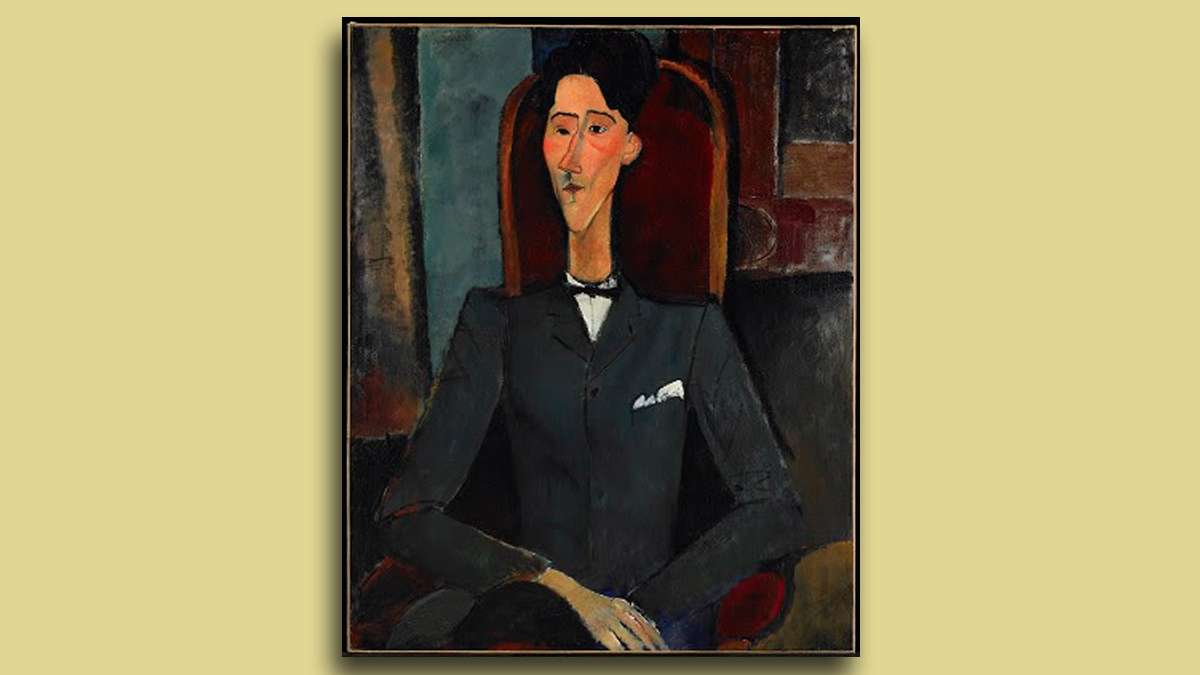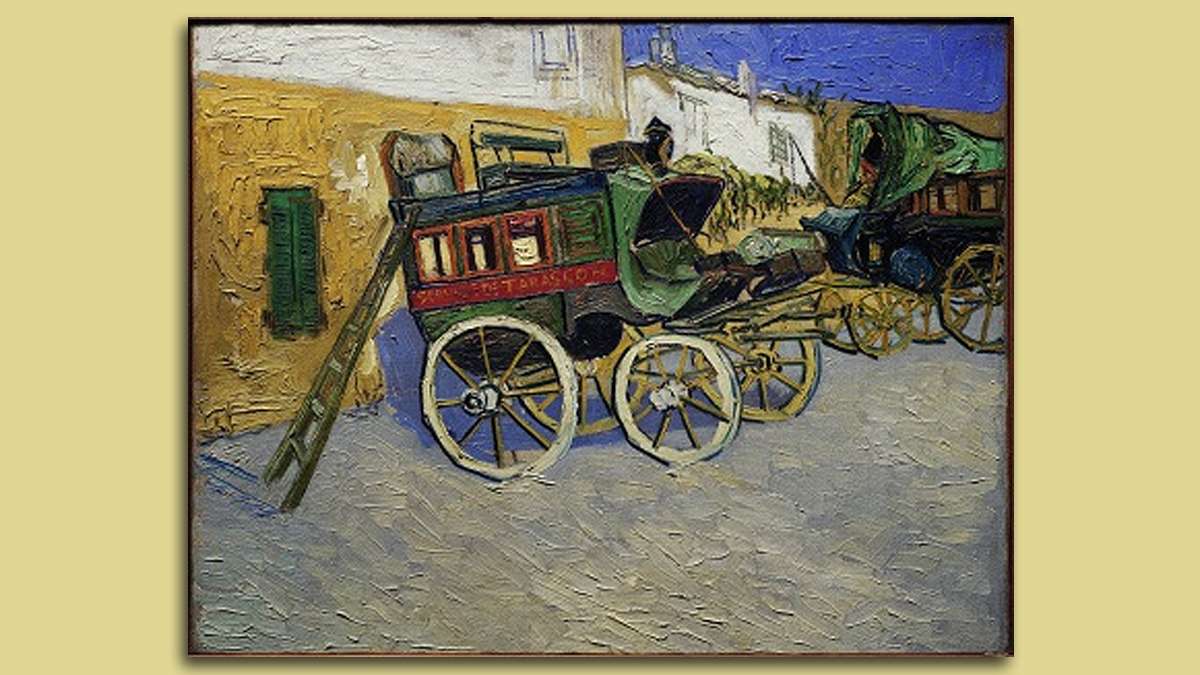The Pearlman Collection featuring works by Cezanne, Gauguin and van Gogh on exhibit in Princeton
It’s a once-in-a-generation chance to see these paintings by Paul Cezanne, Gustave Courbet, Honoré Daumier, Edgar Degas, Paul Gauguin, Édouard Manet, Amedeo Modigliani, Camille Pissarro, Alfred Sisley, Chaïm Soutine, Henri de Toulouse-Lautrec and Vincent van Gogh. Their works make up the Henry and Rose Pearlman Collection and can be seen at the Princeton University Art Museum in Cezanne and the Modern, on view September 19, 2015 through January 3, 2016.
On long-term loan to PUAM since 1976, the collection has not been viewed in its entirety since the 1970s. With more than 70 masterworks, it is considered one of the most distinguished private collections of early modern art in the U.S. Some of the works, such as Cezanne’s suite of 16 watercolors, are light sensitive and rarely ever on view (they were last exhibited at PUAM in the early 2000s).
Cézanne and the Modern centers around the post-Impressionist “Father” of modern painting, whose works compose half the exhibition, and offers insight into the development of modern art as well as the history of art collecting in the United States in the 20th century.
Henry Pearlman’s (1895-1974) is a tale of rags to riches, a self-made businessman from Park Slope, Brooklyn, who sought to make artwork accessible to the public. The son of Russian immigrants – his father worked as a foreman in a printing factory — Pearlman founded the Eastern Cold Storage Insulation Corporation, which made vital contributions to marine shipbuilding during World War II. Later, he founded the Styro Sales Company, distributors of such products as Styrofoam.
With only a high school education, Pearlman began his collection of modern art, then considered avant garde, in 1943 with a Chaim Soutine found in a New York gallery window. He hung “Village Square” over his mantel. “When I came home in the evenings and saw it, I would get a lift, similar to the experience of listening to a symphony orchestration of a piece well known and liked,” he wrote. “This first pleasant experience with a modern painting started me on a road of adventure that has been both exhilarating and satisfying. I haven’t spent a boring evening since.”
After purchasing the painting, Pearlman began reading all he could about Soutine’s life and fellow artists, and soon added a portrait by his best friend, Amedeo Modigliani. “
Pearlman bought his first Cezanne in 1950 – “Cistern in the Park of Chateau Noir.” In 1952 he bought Cezanne’s “Mont Sainte-Victoire.”
Pearlman wasn’t interested in abstract art. He liked figural art with strong composition, capturing interesting things that intrigued him. And he loved anecdotes around paintings.
The Pearlmans “relished living with their collection in his offices and in their homes in Manhattan and Croton-on-Hudson,” writes PUAM Director James Steward in his introduction to the catalog. “Henry loved both the thrill of the chase and the art of the deal. Little was more exciting to him than the discovery of a hidden masterwork (like the Daumier that he first thought might equally be a Rembrandt), a work that had previously flown under the radar (like Van Gogh’s “Tarascon Stagecoach”) or that was unique within an artist’s output… Equally striking are the omissions. Henry expressed a total lack of interest in Picasso and the Cubists.”
One of the other things Pearlman enjoyed about collecting was getting to know the artists. He had portraits made by painter Oskar Kokoschka and sculptor Jacques Lipshutz, developing lasting friendships with both during the studio sessions. He also came to know Albert Barnes, that other great collector of modern art – both shared an interest in collecting Soutine. One Sunday, Barnes invited Pearlman to Merion, Pennsylvania, to see his paintings and listen to the stories of how he acquired them. The difference between Barnes and Pearlman, Henry recounts, is that Barnes would offer “ridiculously” low prices and wait out his sellers during the Great Depression. But for Pearlman, “If I wanted a painting, I simply had to have it, and quickly.”
After spending three hours with Barnes, “We got along beautifully until the last few minutes when, going through a group of Renoirs, we came upon one nude with a backside about a yard wide,” Pearlman writes. “I mentioned casually that I wouldn’t particularly care to have it in my collection. Barnes stopped in his tracks, looked through me, contained himself, and simply said that this Renoir was a masterpiece.”
Pearlman wrote about his encounters with purchasing other artists: Van Gogh, Modigliani, Gauguin, Utrillo, Rousseau, Marsden Hartley, Matisse. Bringing home a large Matisse painting of bathers, Pearlman realized it was too big to hang and after lending it to the Philadelphia Museum of Art, traded it to the Art Institute of Chicago for a Toulouse-Lautrec.
The mission of the Henry and Rose Pearlman Foundation, created in 1955 to serve as custodian of the collection, is to broaden the public reach of art and deepen their personal experience of it, while conserving the original works for future audiences, says Foundation President Daniel Edelman. The Pearlmans were always generous in lending to museums, especially those where diverse audiences who might not get to see such art would have the opportunity. “They felt a moral obligation to better peoples’ lives through the collection,” says Betsy Rosasco, Research Curator of European Painting and Sculpture.
Cezanne and the Modern: Masterpeices of European Art from the Pearlman Collection is on view at Princeton University Art Museum, September 19 through January 3.
____________________________________________________
The Artful Blogger is written by Ilene Dube and offers a look inside the art world of the greater Princeton area. Ilene Dube is an award-winning arts writer and editor, as well as an artist, curator and activist for the arts.
WHYY is your source for fact-based, in-depth journalism and information. As a nonprofit organization, we rely on financial support from readers like you. Please give today.








